Everything you need to know about lambada

Lambada is a popular style of music and dance. She appeared in the north of Brazil. The lambada gained the greatest popularity in the 1980s and 90s.
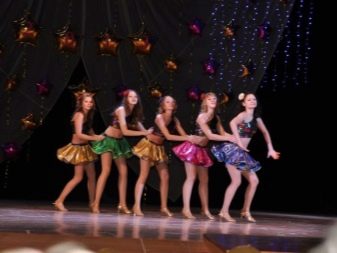

Peculiarities
Lambada is a pair dance, the main ideas of which are eternal youth and beauty, sensuality. Its name translates as "passionate kiss". But there is another translation - "blow of a stick", and this designation speaks of the connection between lambada and carimbo, which is performed with a loud sound of drums.
The main ones in lambada are rotational movements of the hips. It is a 4/4 meter dance with a rhythm of 70 measures in one minute. The first part of the bar should be slow, and the other two parts should be accelerated. You can dance it both on one site and moving around the site. A traditional costume for a dancer is a voluminous skirt with a lot of fluffy flounces. It should end just above the knee.
The main movement in this dance is the eight hips. It is necessary to dance it in a fast rhythm, while you should not lose balance and harmony with sharp turns and other complex movements.
And also an important feature of the lambada is that during the dance, the legs and hips of the partners must be in constant contact.... Lambada figures can be performed in any order.
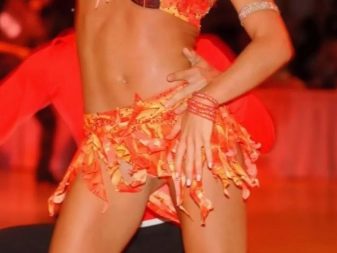

The history of the emergence of dance
This popular style is based on the techniques of the carimbo dance, which was performed by the Indians of the Amazon. The predecessors of the lambada include such dances as matchish, forro.
The Karimbo dance has existed since the days when Brazil was a Portuguese colony.This sensual dance was based on the fact that the partners in the process of fast movements tried to "cover" the partners with their lush large skirts. During the dance, they played wooden drums.
Over time, the karimbo began to change, new rhythms and movements arose. Due to the close proximity of the Caribbean islands, the dance was greatly influenced by the Caribbean culture. After a while, radio stations began to call the new dance "lambada rhythms." This name has come to be associated with a completely new dance style.
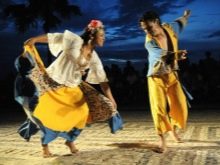
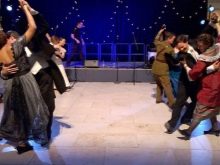

The city of Porto Seguro is considered the birthplace of the style; it is located in Brazil. Producer Olivier Lamotte visited this city in the 80s of the last century. Having been there at the carnival, he wanted to bring this dance style to different countries. In France, Lamotte formed the Kaoma music group. It included black performers.

In the late 80s, the band recorded the musical composition Lambada. Its lyrics were borrowed from another Bolivian band (Los Kjarkas). After that, the most popular was the instrumental version of the melody. Since then, the song lambada has become associated with the lambada dance. After its release, the dance also gained immense popularity around the world. The composition has been translated into many languages.
Later, a video was even filmed. It depicted a white blonde girl dancing with a black boy. At the end of the video, the girl receives a slap in the face from her own father for this. But after the release of the song Lambada, the music group Kaoma began to be accused of plagiarism. Los Kjarkas even sued her. Kaoma lost the trial and the musicians had to pay a forfeit.
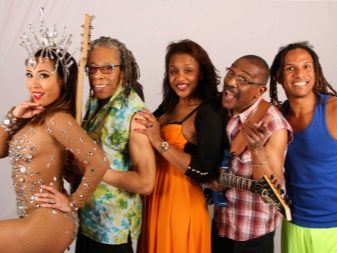
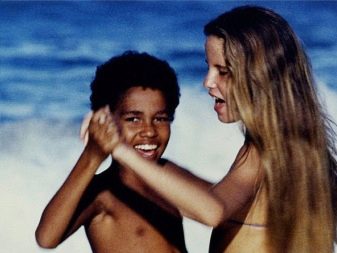
In the USSR, the song became especially popular; a translation of its text was even published in Pionerskaya Pravda. Later, the dance was taught in schools. And also all over the country, circles began to appear where they taught lambada.
Composer Vladimir Migulya became one of the Soviet performers in the lambada style. His composition "Black Sea Lambada" even took part in the prestigious "Song-90" festival.
In Russia, the style became known thanks to the singer Sergei Minaev. Cassettes with his composition were sold out almost immediately. The rhythms of this dance began to spread at youth discos.

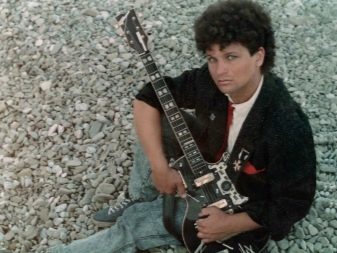
In addition, this composition even appeared in the cartoon "Well, wait!". African hares danced to it. The films Lambada and Forbidden Dances were dedicated to this dance style.
Fans of song and dance began to meet frequently at the Mariinsky Park. There they exchanged cassettes, and also competed in their dance skills. Over time, the famous lambada festival appeared.
As the lambada spread throughout the world, the dance began to change significantly. After all, there were not enough professional dancers to shoot various shows and movies, simple dancers began to make their own changes. In lambada, whirling and acrobatic elements were added.
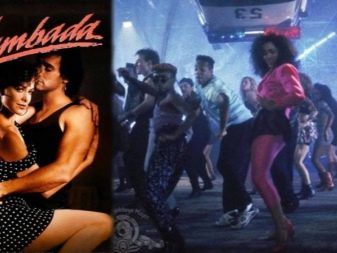
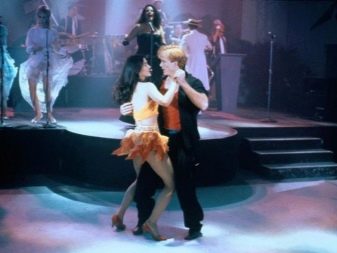
After a while, the music and dance of the lambada began to be forgotten. Many dancers began to mix this style with others. Music was often combined with Caribbean influences. In the future, the traditional lambada regained its former popularity, while there were no longer many acrobatic tricks in it. The dance has become much more tender, sensual.
There is a myth that in Brazil, lambada was banned before the song was released due to excessive frankness. Although, in reality, another dance (matchish) was forbidden. His movements resembled those of a lambada.

How to dance?
Many people think that this dance is quite difficult to perform. But nowadays there are many detailed tutorials for beginners. They will help you learn how to correctly perform lambada without leaving your home. Let's figure out how to dance it in pairs and alone.
Paired with
In this case, the man should clasp his partner's waist, while she should put her left hand on his shoulder. The partner should extend his left hand so that it is between him and the woman.
After that, the man needs to take the girl's right hand and keep his hands in a closed position in the chest area. Moreover, the legs of the dancing people touch a little. In any case, when performing a pair dance, the man does all the movements only with the left foot, and the girl with the right, and they finish the movements, on the contrary, the girl with the left foot, the man with the right.
A partner can put his entire foot at once, while a woman is better off dancing only on her toes. Moreover, she must keep her legs straight. Otherwise, the couple will not be able to correctly perform harmonious movements and complex turns.
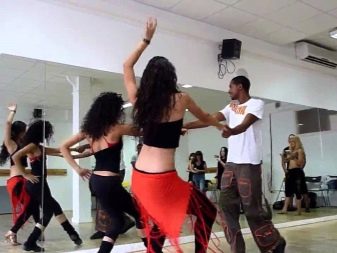

By oneself
If you are just learning to dance, then it is best to choose a fairly spacious room for training. It is necessary to stand up straight. First, slowly "circle" the hips in the air in the form of a figure eight. After enough training, you need to learn how to move your hips as quickly as possible.
In the process of such movements, the body should be transferred from foot to foot. Then an additional element is added - steps. It is necessary to repeat all the movements, moving a little forward.
The combination of all movements should look organic and beautiful. In the process of execution, legs are alternately put in different directions.
It will be rather difficult to use the whole body at once when performing a dance, therefore, only after you learn how to correctly perform all the above movements, you should add elements that are done with your hands. They must be lifted up and shaken in turn.
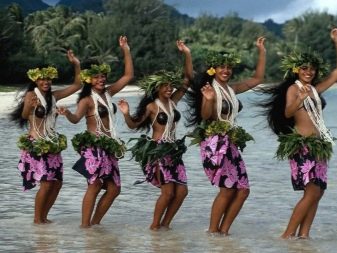
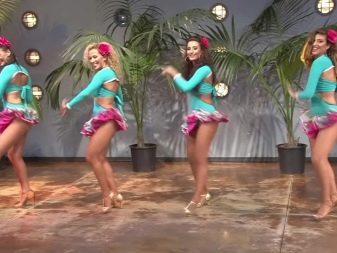
When you have fully worked out all the movements, you should work out the tempo. A traditional lambada should be performed fairly quickly.
Anyway when teaching you will need a large mirror to see your own movements. It is also recommended to include appropriate musical compositions during training. It is best to wear traditional clothing right away.
Experts recommend training not alone, but in a group. And you can line up with a "locomotive". All movements together with steps are performed in such a way as to achieve synchronization.
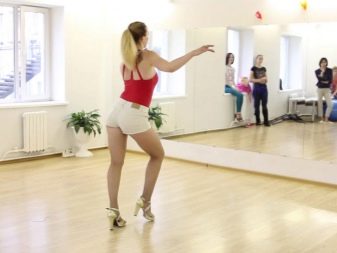

clothing
To dance the traditional lambada, you need to choose the right clothes.
-
For women. The partner should be dressed in a short top and a miniskirt, decorated with fringes and fringes. During the dance, the skirt should fly apart, giving more dynamism. You can dance the lambada barefoot, but it is still advisable to wear shoes with small heels. Such shoes can emphasize the beauty and slimness of the legs. It is recommended to tuck the hair into a small neat bun, or just leave it loose.
-
For men. For partners, the best option would be a motley shirt, plain trousers.

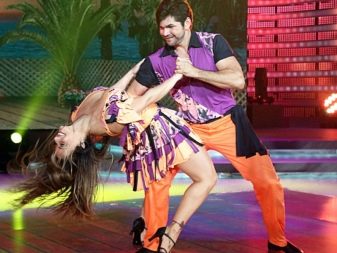
There are now detailed dance lessons, so you can learn lambada not only by video from the Internet... You can turn to the services of a dance coach.
It is recommended to learn lambada in a professional studio, because this style has many important nuances that are quite difficult to learn on your own without a professional's explanation.








